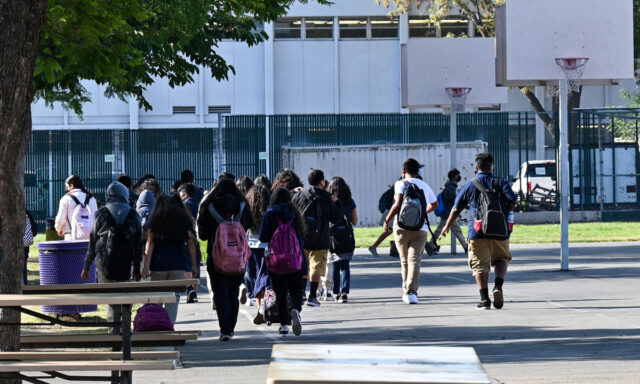The number of homeless students in the Los Angeles Unified School District (LAUSD) has risen sharply this academic year, reaching 10,819 students for the 2024–25 school year—an increase of 27% (2,308 students) compared to the previous year, according to EdSource.
This spike is more than three times the statewide growth rate. Across California, the total number of homeless students in public schools (TK–12) rose 9.3% to 230,443, an increase of 19,536 from the previous year. Over the past decade, the number of homeless students statewide has climbed more than 37%.
Housing instability and enforcement cited as key factors
Experts cite economic hardship, rising housing and living costs, and the end of pandemic-era eviction protections as primary drivers. Natural disasters such as wildfires and floods have also pushed more families into unstable housing situations.
Karina Vega, a counselor in the Coachella Valley Unified School District, said, “I’ve never seen so many student families living in homelessness. It’s common now for several families to share a cramped trailer without electricity or water.”
In Koreatown, Father Yohan Kim of St. James Episcopal Church, which operates a shelter for adults, shared the story of a Korean American family whose middle school child had been sleeping on the street. The family stayed at the shelter for six months. “In this economic downturn, more undocumented families are ending up homeless as immigration enforcement intensifies,” Kim said.
He added, “Since the Trump administration, some undocumented students have stopped attending school entirely out of fear of deportation. We’re now seeing entire families wandering the streets.”
Some of the increase may also reflect improved identification efforts. Since 2021, the California state government has required housing-related surveys as part of school enrollment paperwork. These efforts have helped districts identify more students in need and allowed for the distribution of $98.76 million in federal funds from the American Rescue Plan – Homeless Children and Youth (ARP-HCY) program. Districts have used these funds for emergency housing, school transportation, after-school care, and laundry services. However, EdSource reports that the federal government has no plans to renew this funding, raising concerns about how schools will continue to support homeless students in the future.
Student homelessness extends to colleges
Homelessness is also affecting college students. In April, Assemblymember Corey Jackson (D-CA) introduced a bill to allow students to sleep overnight in school parking lots, citing a growing number of college students living in their vehicles.
BY KYEONGJUN KIM [kim.kyeongjun1@koreadaily.com]





